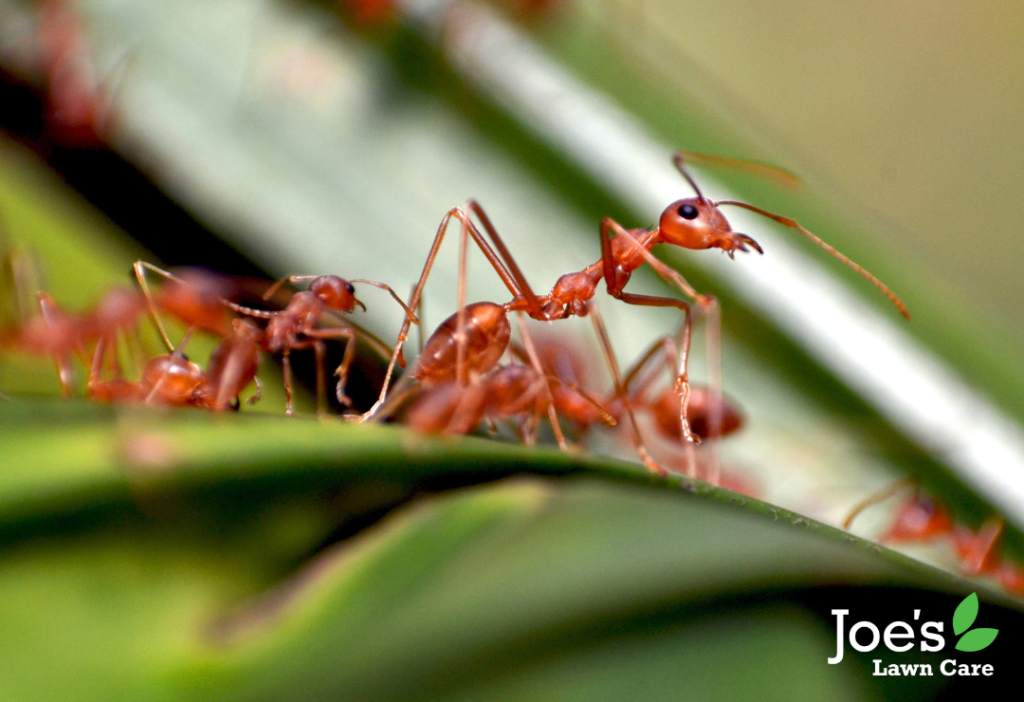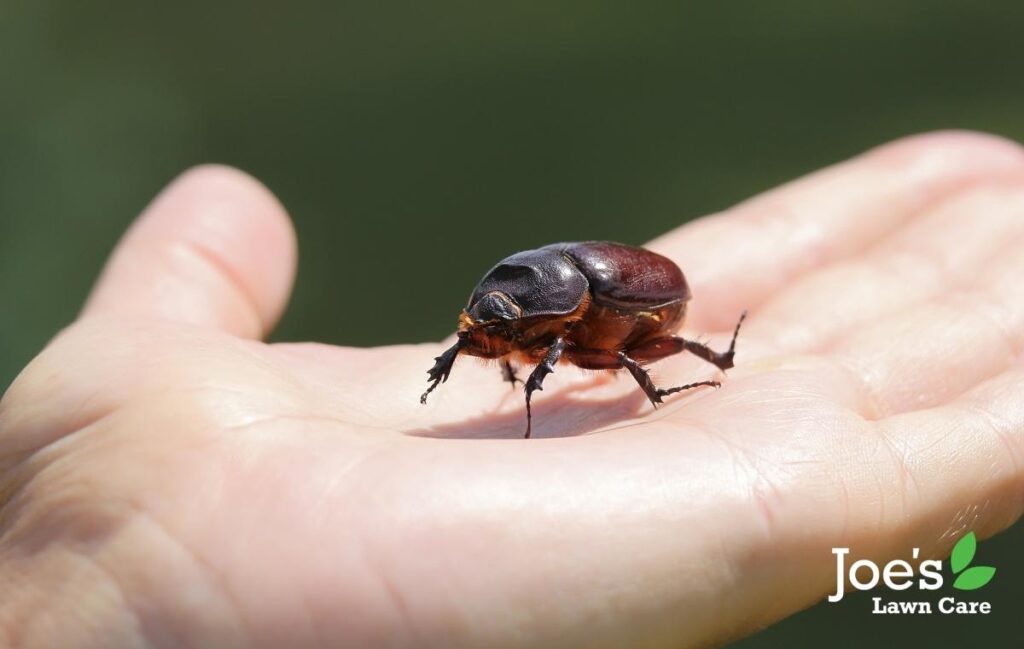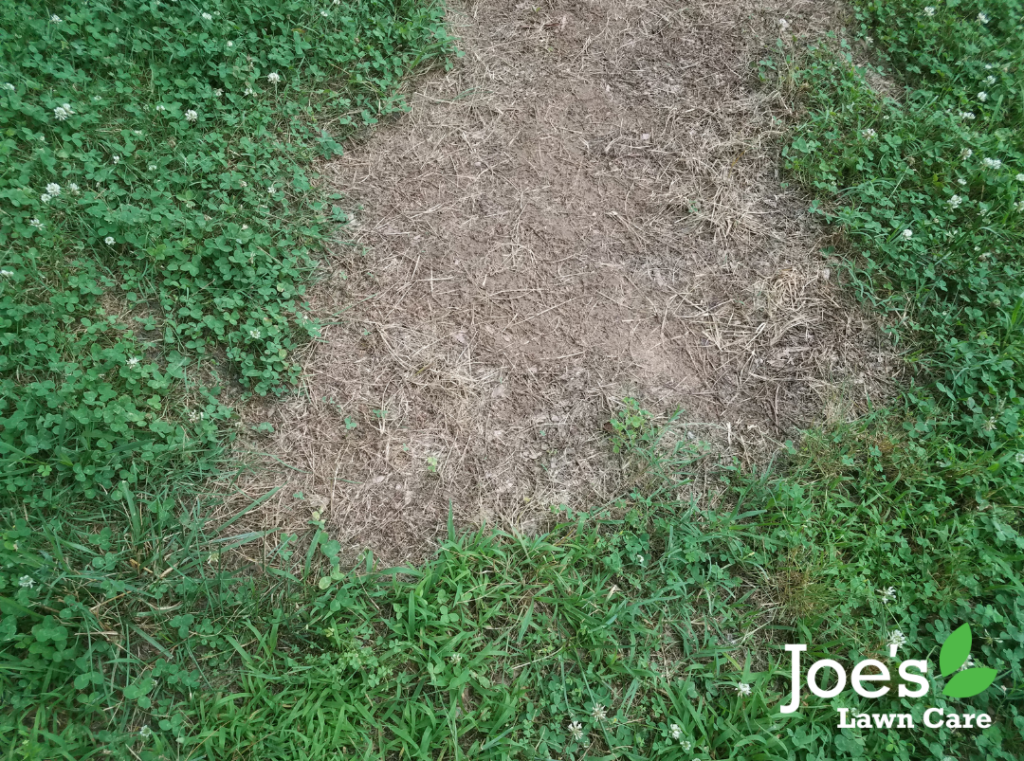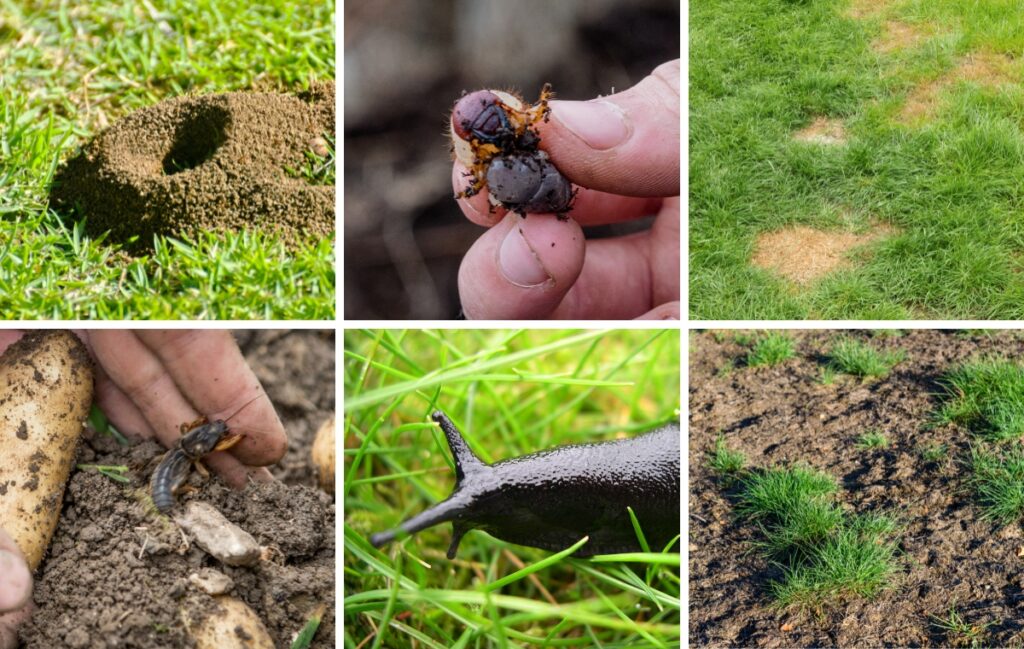8 Lawn Pests And Diseases To Look Out For This Summer:
As the sun shines high in the sky, the smell of freshly cut grass fills the air and summer unveils its vibrant colours. Nothing beats the sight of a lush lawn, that healthy green hue and a cut so even it looks like the stubble on a Gillette model. The problem is, you can’t always see what’s attacking your lawn.
Yepp, lurking beneath the surface, a secret battle is taking place; one between your cherished lawn and a legion of pests and diseases. But fear not, brave gardener, for this guide will unveil the most common lawn problems to look out for during the summer months and equip you with the knowledge needed to defend your green paradise.

Ants
The little terrors of the outdoors boast seriously impressive teamwork and the most relentless determination, which is the reason ants can quickly turn your lawn into their playground. But as they construct their unsightly (but pretty awesome) mounds, they can really disrupt and harm your grass roots. Here’s what you can do:
- Natural Deterrents: Sprinkle cinnamon around ant hills to repel them. These natural substances disrupt their scent trails and discourage their presence.
- Borax Solutions: Create a mixture of sugar, water, and borax, and place it near the ant hills. The ants will be attracted to the sugar but unknowingly ingest the borax, eventually eradicating the colony.
- Professional Help: If the ant infestation persists, get in touch with our team of lawn care professionals and we can help create a solution.
Slugs and Snails
As darkness falls, slugs and snails emerge from their hiding spots, ready to feast on your beloved plants and grass, wreaking havoc on your lawn like the night time villains they are (at least in terms of lawn care). Here’s what you can do:
- Beer Traps: Sink containers filled with beer into the ground near affected areas. Slugs and snails are attracted to the scent, but the alcohol will prove fatal to them.
- Copper Barriers: Create a barrier using copper tape or wire around vulnerable plants and lawn edges. The sensation of touching copper repels these slimy invaders.
- Natural Predators: Encourage the presence of hedgehogs, toads and birds that feast on slugs and snails by providing suitable habitats and food sources.
Powdery Mildew
As the sun shines brighter and the mercury rises even more, a hazy white film can coat your grass blades, signalling the presence of one nasty disease: powdery mildew, a fungal disease that thrives in warm and humid conditions. Here’s what you can:
- Pruning and Thinning: Trim back overgrown vegetation to increase air circulation and reduce humidity levels, preventing the spread of powdery mildew.
- Fungicidal Sprays: Apply fungicidal sprays specifically designed for powdery mildew to affected areas, following the manufacturer’s instructions.
- Preventive Measures: Regularly inspect your lawn for early signs of the disease, as early detection allows for quicker intervention and minimises its impact.

Chafer Beetles
Chafer beetles are notorious lawn pests that can wreak havoc on your lawn as they lay their eggs in the soil, which then hatch into voracious chafer grubs. These grubs feast on the grassroots, causing visible damage and weakening the overall health of the lawn. This may even result in brown patches, thinning grass and bare areas. Here’s what you can do:
- Beneficial Nematodes: These microscopic organisms seek out and feed on chafer grubs, helping you to control the chafer beetle population.
- Maintaining a Healthy Lawn: With regular mowing, proper irrigation, and appropriate fertilisation, you can discourage chafer beetles from making your lawn their home.
Leather Jacket
Leatherjackets, the larval stage of crane flies, can cause significant harm to your lawn. This is because these worm-like pests feed on grass roots, leading to weakened and patchy areas on the lawn; something that may only become evident as the grass turns yellow and starts to die off. Here’s what you can do:
- Beneficial Nematodes: Just like with chafer beetles, these microscopic organisms seek out and feed on leatherjackets, helping to control their population.
- Add Natural Predators: Encouraging starlings and thrushes into your lawn can help keep your leatherjacket populations in check.
Good Lawn Practices: Think of proper watering and aeration as a way to make the lawn less appealing to this kind of pests.

Brown Patch Disease
As the summer heat intensifies, a stealthy culprit known as brown patch disease may just emerge in your garden, leaving some unsightly circular brown patches on your once-lush lawn. Here’s what you can do:
- Proper Watering: Water deeply but infrequently to discourage the growth of the fungus responsible for brown patch disease. Morning watering allows the grass to dry throughout the day.
- Improve Drainage: Ensure your lawn has proper drainage to prevent excessive moisture accumulation, which creates favourable conditions for the disease.
- Fungicides: In severe cases, fungicides formulated for brown patch disease can be used. Consult a professional for guidance on appropriate application.
Red Thread
Red Thread disease is one of the most common fungal infections and one that cause pretty savage harm to your lawn. Manifesting as pinkish-red thread-like strands that develop on the grass blades, they will lead to patches of dead or discoloured grass, weaken the overall health of the lawn and make it more susceptible to other issues. Here’s what you can do:
- Be A Lawn Care Legend: Keep up with regular mowing, fertilisation, and adequate moisture management as a way to make your lawn’s self-defence stronger.
- Fertiliser Please: Applying nitrogen-rich fertilisers can help promote healthy grass growth and aid in the recovery of affected areas.
- More Air Needed: Improving the air circulation around your lawn by pruning overhanging branches and reducing thatch can discourage the spread of the disease.
Mole Cricket
Mole crickets are an underground pest that can cause significant pain and suffering to lawns. Tunnelling beneath the soil, these insects feed on grass roots which, you guessed it, causes extensive damage. Not ideal. The result is uneven surfaces, weakened grass and visible tunnels. Double not ideal. Here’s what you can do:
- Be On The Lookout: Regular monitoring and early detection are crucial here, while applying insecticides specifically formulated for mole crickets can help control their population.
- Make Your Lawn Healthy: Maintaining a healthy lawn by practising proper irrigation, mowing and fertilisation techniques.
- Tackle The Top: Reducing excess moisture and removing thatch will also make your lawn less attractive to mole crickets.

Final Thoughts
In the epic saga of lawn care, summer unleashes a new breed of pests and diseases upon our green havens. But armed with the above strategies and a steadfast determination, you can triumph over the challenges that arise. And, should you need it, our team of lawn care heroes is on hand to provide professional help when needed.
Thanks for reading our guide, 8 Lawn Pests And Diseases To Look Out For This Summer. For more lawn care tips and tricks, follow us on Facebook and Instagram.





